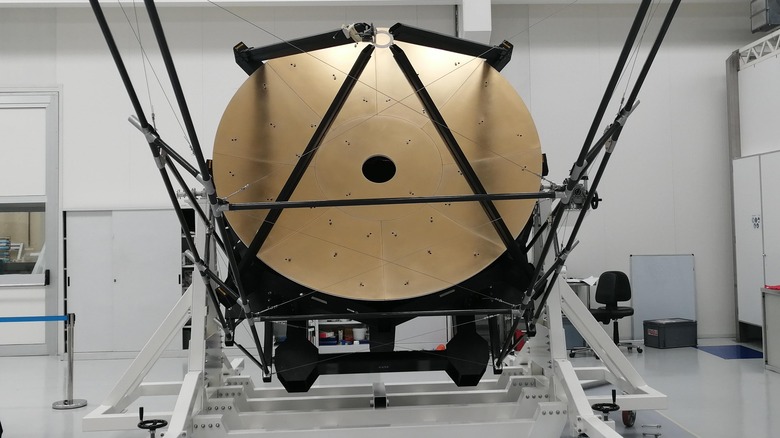Why NASA Is Launching A Telescope Strapped To A Giant Balloon
Most telescopes for scientific research fall into two categories: ground-based telescopes, which either consist of one single large dish like the 1,640-foot Aperture Spherical Radio Telescope in China or multiple dishes linked into an array like the Atacama Large Millimeter/submillimeter Array in Chile; or space-based telescopes, which can orbit either around the Earth like the Hubble Space Telescope or around the sun like the James Webb Space Telescope. But there is a third option for research telescopes that are neither on the ground nor in space, and it is those that operate at high altitudes far above the altitude at which planes fly.
How do you get a telescope to such an altitude? By attaching it to an enormous balloon. NASA has plans to use a huge balloon (the size of a football field when fully inflated) to carry a telescope to an altitude of 130,000 feet over Antarctica (via JPL). The ASTHROS project, which stands for Astrophysics Stratospheric Telescope for High Spectral Resolution Observations at Submillimeter-wavelengths, includes a telescope with an 8.2-foot mirror that had to be made extremely thin so it is light enough to be lifted by the balloon.
"I think this is probably the most complex telescope ever built for a high-altitude balloon mission," said Jose Siles of NASA's Jet Propulsion Laboratory, ASTHROS project manager. "We had specifications similar to a space telescope but on a tighter budget, schedule, and mass. We had to combine techniques from ground-based telescopes that observe in similar wavelengths with advanced manufacturing techniques used for professional racing sailboats. It's pretty unique."
Studying stellar feedback
The aim of the project is to study a phenomenon called stellar feedback, which is a process regulating the rate of new star formation. On one hand, active stars throw off clouds of dust and gas that are the building blocks of new stars. On the other hand, stars can also give off streams of particles called stellar winds that can blow these clouds away and prevent new stars from forming nearby.
Stellar winds aren't the only process that contributes to stellar feedback though. There are also other factors like the forces of supernova explosions when a massive star comes to the end of its life, which blows gas around. This process of stellar feedback means only some new stars form, keeping a galaxy in balance (via Monthly Notices of the Royal Astronomical Society).
To look at this process on a smaller scale, ASTHROS will create 3D maps of busy star-forming regions of the Milky Way to see how gas moves around and where it is dense or sparse. Then the telescope will also look at distant galaxies to see the effects of feedback on a galaxy as a whole. "It's difficult to explore feedback all the way from where it originates, at the scale of individual stars, to where it has an effect, on the scale of galaxies," said the principal investigator for ASTHROS, Jorge Pineda. "With a large mirror we can connect those two." The ASTHROS project is set to launch in December 2023.
